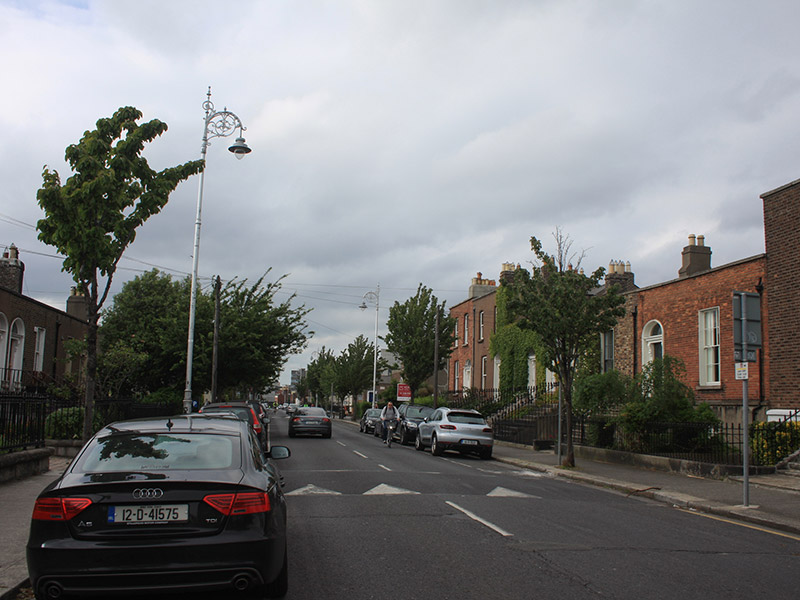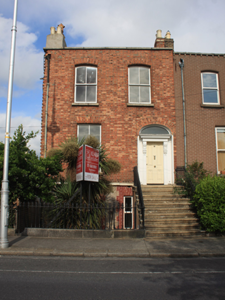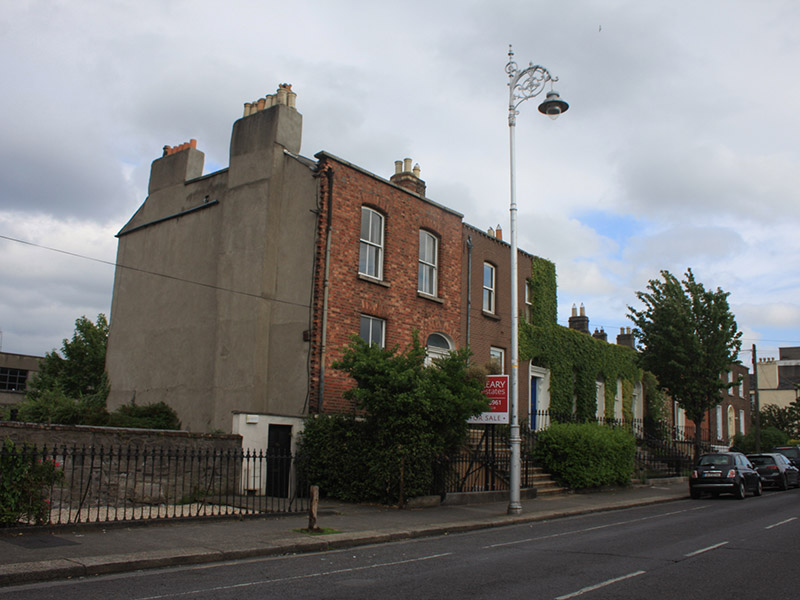Survey Data
Reg No
50110348
Rating
Regional
Categories of Special Interest
Architectural, Artistic
Original Use
House
In Use As
Apartment/flat (converted)
Date
1860 - 1870
Coordinates
315401, 232991
Date Recorded
16/06/2017
Date Updated
--/--/--
Description
Attached two-bay two-storey former house over raised basement, built c. 1865, now in use as apartments. M-profile pitched slate roof with red brick parapet having cut granite coping. Brick and rendered chimneystacks with clay and terracotta pots. Red brick, laid in Flemish bond, to wall to front (west) elevation with cut granite plinth course over rusticated squared limestone basement wall. Rendered walls to side (north) and rear (east) elevations. Square- and segmental-headed window openings having granite sills, bullnosed surrounds, one-over-one pane and two-over-two pane timber sliding sash windows. Brick surrounds to basement windows. Elliptical-headed door opening to front, with moulded render surround remaining to sides, rendered reveal to plain glazed fanlight. Doorcase comprising panelled pilasters having scrolled consoles with acanthus leaf detail supporting carved cornice. Timber panelled door with brass details. Nosed granite steps having cast-iron railing and coal-hole cover. Cast-iron gate with anthemion finials and matching railings on granite plinth wall enclosing basement.
Appraisal
Due to its form, scale and siting, this house makes an eye-catching contribution to the streetscape. Well-proportioned, it retains historic features including a well-executed doorcase and granite dressings. Its fine railings are testament to the quality of Victorian mass-produced ironwork, and add to both the setting of the house and the character to the streetscape. Built for the growing middle class, its classically-influenced style denoted respectability. Heytesbury Street forms part of an early Victorian neighbourhood located to the west of Camden Street. Named after Baron Heytesbury, Viceroy 1844-6, the street was first laid out in 1846 and was nearing completion by 1861.





